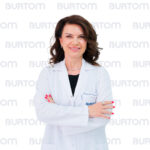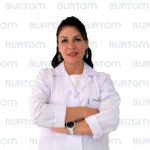Burtom ‣ Departments ‣ Diagnostic Radiology
Language: 🇬🇧 English | 🇹🇷 Türkçe

Diagnostic Radiology Department Overview

The Diagnostic Radiology Department serves as a crucial hub within healthcare facilities, specializing in the use of advanced imaging techniques to visualize internal structures and diagnose medical conditions. Here’s an overview of its key components and functions:
X-ray Radiography: Utilizes X-rays to create detailed images of bones and some soft tissues, aiding in the diagnosis of fractures, infections, and abnormalities.
Computed Tomography (CT) Imaging: Employs X-rays and computer technology to produce cross-sectional images of the body, offering detailed views of organs, blood vessels, and tissues.
Magnetic Resonance Imaging (MRI): Uses powerful magnets and radio waves to generate detailed images of soft tissues, organs, and the nervous system, assisting in the diagnosis of neurological, musculoskeletal, and abdominal conditions.
Ultrasound Imaging: Utilizes sound waves to create real-time images of internal structures, commonly used for assessing fetal development, abdominal organs, and vascular conditions.
Fluoroscopy: Involves real-time X-ray imaging to observe the movement of internal structures, aiding in procedures like barium studies and angiography.
Nuclear Medicine: Utilizes radioactive tracers to create images of organ function, helping in the diagnosis and monitoring of conditions such as cancer and cardiovascular disease.
Mammography: Specialized X-ray imaging focused on breast tissue, primarily used for breast cancer screening and diagnosis.
Interventional Radiology: Involves minimally invasive procedures guided by imaging techniques, such as angioplasty, embolization, and biopsies, for both diagnostic and therapeutic purposes.
Picture Archiving and Communication Systems (PACS): Digital systems for storing, retrieving, and managing radiological images, enhancing efficiency and accessibility for healthcare professionals.
Radiation Safety and Protection: Ensures the safe and responsible use of radiation in diagnostic procedures, implementing protocols to minimize patient and staff exposure.
Subspecialties: Encompasses various subspecialties such as neuroradiology, musculoskeletal radiology, and cardiovascular imaging, allowing for specialized expertise in specific areas.
Tele-Radiology: Utilizes technology for remote interpretation of imaging studies, facilitating collaboration between radiologists and healthcare providers across different locations.
Research and Innovation: Engages in ongoing research and embraces technological advancements to improve diagnostic capabilities and enhance patient care.
Collaboration with Clinical Teams: Works closely with other medical specialties, providing imaging support to aid in accurate diagnoses and treatment planning.
Continuing Education: Ensures that radiologists and technologists stay updated on the latest advancements through continuous education and training.
The Diagnostic Radiology Department plays a pivotal role in modern healthcare, providing essential diagnostic information that guides medical decision-making and contributes to improved patient outcomes.
Key Functions of an Diagnostic Radiology

The key functions of a Diagnostic Radiology Department encompass a range of imaging services crucial for medical diagnosis and treatment. Here are the primary functions:
X-ray Imaging: Performing conventional X-ray examinations to visualize bones, tissues, and organs for the detection of fractures, infections, and structural abnormalities.
Computed Tomography (CT) Scans: Conducting CT scans using X-rays and computer technology to create detailed cross-sectional images of the body, aiding in the diagnosis of various conditions.
Magnetic Resonance Imaging (MRI): Utilizing powerful magnets and radio waves to produce detailed images of soft tissues, organs, and the nervous system, assisting in the diagnosis of neurological and musculoskeletal conditions.
Ultrasound Imaging: Employing sound waves to create real-time images of internal structures, commonly used for assessing fetal development, abdominal organs, and vascular conditions.
Fluoroscopy: Providing real-time X-ray imaging during certain procedures, such as barium studies, to observe the movement of internal structures.
Nuclear Medicine: Using radioactive tracers to create images of organ function, aiding in the diagnosis and monitoring of conditions such as cancer and cardiovascular disease.
Mammography: Conducting specialized X-ray imaging of breast tissue for breast cancer screening and diagnosis.
Interventional Radiology: Performing minimally invasive procedures guided by imaging, such as angioplasty, embolization, and biopsies, for both diagnostic and therapeutic purposes.
Radiation Safety and Protection: Ensuring the safe and responsible use of radiation during diagnostic procedures, implementing protocols to minimize patient and staff exposure.
Picture Archiving and Communication Systems (PACS): Utilizing digital systems for storing, retrieving, and managing radiological images, enhancing efficiency and accessibility for healthcare professionals.
Tele-Radiology Services: Offering remote interpretation of imaging studies, facilitating collaboration between radiologists and healthcare providers across different locations.
Subspecialty Expertise: Providing specialized expertise in subspecialties such as neuroradiology, musculoskeletal radiology, and cardiovascular imaging to address specific diagnostic challenges.
Research and Innovation: Engaging in research initiatives and incorporating technological advancements to enhance diagnostic capabilities.
Continuing Education: Ensuring that radiologists and technologists stay updated on the latest developments through continuous education and training programs.
Collaboration with Clinical Teams: Working closely with other medical specialties, providing essential imaging support to aid in accurate diagnoses and treatment planning.
These key functions collectively contribute to the Diagnostic Radiology Department’s overarching goal of providing accurate and timely diagnostic information, enabling healthcare professionals to make informed decisions and optimize patient care.
Situations within the scope of Diagnostic Radiology

Situations within the scope of Diagnostic Radiology encompass a broad range of scenarios where medical imaging plays a crucial role in diagnosis, treatment planning, and monitoring. Here are some common situations:
Trauma Evaluation: Assessing injuries and fractures through X-rays and CT scans to guide appropriate medical interventions.
Cancer Diagnosis and Staging: Performing imaging studies such as CT scans, MRI, and PET scans to diagnose cancer, determine its extent, and aid in treatment planning.
Cardiovascular Imaging: Using imaging modalities like angiography and CT angiography to assess heart and vascular conditions, including coronary artery disease.
Neurological Disorders: Conducting CT and MRI scans for the diagnosis and monitoring of neurological conditions such as strokes, tumors, and degenerative diseases.
Abdominal and Pelvic Conditions: Employing imaging techniques like ultrasound, CT, and MRI to diagnose and monitor conditions affecting the abdominal and pelvic organs.
Orthopedic Evaluations: Utilizing X-rays, CT scans, and MRI to assess musculoskeletal conditions, including fractures, joint abnormalities, and soft tissue injuries.
Pediatric Imaging: Performing specialized imaging studies for children to diagnose conditions such as congenital anomalies, developmental issues, and childhood cancers.
Emergency Radiology: Providing rapid imaging assessments for emergency cases, such as head trauma, abdominal pain, and suspected fractures.
Gastrointestinal Imaging: Conducting studies like barium swallow, barium enema, and CT enterography to evaluate gastrointestinal conditions.
Pulmonary Imaging: Using imaging techniques like chest X-rays and CT scans to diagnose and monitor respiratory conditions, including pneumonia and lung cancers.
Breast Imaging: Conducting mammography, ultrasound, and MRI for breast cancer screening, diagnosis, and monitoring.
Renal and Urinary Tract Imaging: Utilizing imaging modalities like ultrasound and CT urography to assess kidney and urinary tract conditions.
Interventional Radiology Procedures: Performing minimally invasive procedures under imaging guidance, such as biopsies, drainages, and catheter insertions.
Rheumatologic Imaging: Employing imaging techniques to assess joint and soft tissue involvement in rheumatic conditions.
Follow-up and Monitoring: Conducting imaging studies for post-treatment monitoring, evaluating the effectiveness of interventions and tracking disease progression or regression.
These situations highlight the diverse applications of Diagnostic Radiology across medical specialties, demonstrating its pivotal role in modern healthcare for accurate diagnosis and effective patient care.
Patient Experience in the Diagnostic Radiology

The patient experience in Diagnostic Radiology is pivotal, encompassing various aspects that contribute to a positive and comfortable encounter during imaging procedures. Here are key elements that shape the patient experience in this field:
Communication and Education: Clear and empathetic communication from radiology staff explaining the procedure, expected duration, and any necessary preparations enhances patient understanding and reduces anxiety.
Comfortable Environment: Creating a welcoming and comfortable environment in the radiology facility, including amenities like changing rooms, comfortable gowns, and waiting areas, contributes to a positive experience.
Warm Staff Interaction: Friendly and compassionate interactions with radiology technologists and staff help alleviate patient concerns and foster a sense of trust.
Minimizing Discomfort: Taking measures to minimize discomfort during imaging procedures, such as providing cushions or blankets and ensuring proper positioning, enhances the overall experience.
Clear Instructions: Providing clear instructions for patients to follow before and during the imaging process, including any necessary preparations, helps patients feel more informed and in control.
Pediatric-Friendly Approach: Adopting a child-friendly approach for pediatric patients, including colorful and inviting imaging rooms, to ease anxiety and make the experience more positive for children.
Efficient Scheduling and Wait Times: Streamlining scheduling processes and minimizing wait times contribute to a smoother and more efficient experience for patients.
Respect for Privacy: Ensuring patient privacy and modesty during imaging procedures by using appropriate draping and maintaining confidentiality.
Technological Comfort: Offering explanations about the imaging equipment and procedures, addressing any concerns patients may have about the technology being used.
Post-Procedure Guidance: Providing clear post-procedure instructions and information about when and how patients will receive their results contributes to a comprehensive patient experience.
Patient Advocacy: Acting as patient advocates by addressing any discomfort or concerns promptly, ensuring a positive overall experience.
Accessibility and Accommodations: Making accommodations for patients with mobility challenges or special needs to ensure accessibility and a more inclusive experience.
Follow-up Communication: Communicating results promptly and effectively, with follow-up guidance as needed, contributes to the patient’s understanding of their medical situation.
Patient-Centered Care: Emphasizing patient-centered care by considering individual needs, preferences, and concerns throughout the imaging process.
Continuous Improvement: Seeking patient feedback and continuously improving processes based on patient experiences contributes to ongoing enhancements in service quality.
The patient experience in Diagnostic Radiology is a collaborative effort that involves clear communication, a comfortable environment, and a patient-centered approach to ensure that individuals feel supported and informed during imaging procedures. These elements collectively contribute to a positive encounter, fostering trust and confidence in the healthcare process.
Conclusion

In conclusion, the patient experience in Diagnostic Radiology is a crucial component of modern healthcare, characterized by a commitment to providing compassionate, efficient, and patient-centered services. The seamless integration of advanced imaging technologies with empathetic care contributes to an overall positive encounter for individuals undergoing diagnostic procedures.
Clear communication, educational efforts, and the creation of a comfortable environment are foundational elements that help alleviate anxiety and enhance patient understanding. The respectful and warm interactions between radiology staff and patients foster trust and confidence, creating a supportive atmosphere during what can be a potentially stressful experience.
Efforts to minimize discomfort, streamline scheduling processes, and maintain respect for patient privacy further contribute to the overall quality of the patient experience. Embracing a pediatric-friendly approach ensures that even the youngest patients receive care that is tailored to their unique needs.
As technology continues to advance, the Diagnostic Radiology field remains dedicated to continuous improvement, seeking patient feedback, and incorporating innovative practices to enhance the overall experience. The provision of clear post-procedure guidance and timely communication of results demonstrates a commitment to comprehensive patient care beyond the imaging process.
In essence, the patient experience in Diagnostic Radiology is a collaborative endeavor, where healthcare professionals work alongside patients to ensure their well-being, understanding, and comfort throughout the diagnostic journey. By prioritizing these elements, Diagnostic Radiology contributes not only to accurate medical diagnoses but also to the overall satisfaction and confidence of individuals in their healthcare interactions.
Medical Devices Used in the Diagnostic Radiology

Diagnostic Radiology relies on a variety of advanced medical devices to capture detailed images of internal structures for diagnostic purposes. Here are key medical devices used in Diagnostic Radiology:
X-ray Machines: Traditional X-ray machines use ionizing radiation to create images of bones and tissues, aiding in the diagnosis of fractures, infections, and other conditions.
Computed Tomography (CT) Scanners: CT scanners combine X-rays and computer technology to produce cross-sectional images of the body, providing detailed views of organs and tissues.
Magnetic Resonance Imaging (MRI) Machines: MRI machines use strong magnets and radio waves to generate detailed images of soft tissues, organs, and the nervous system, particularly valuable for neurological and musculoskeletal imaging.
Ultrasound Machines: Ultrasound devices utilize sound waves to create real-time images of internal structures, commonly used for examining the abdomen, pelvis, and developing fetuses.
Fluoroscopy Machines: Fluoroscopy involves real-time X-ray imaging and is utilized for dynamic examinations, such as barium studies, angiography, and certain interventional procedures.
Nuclear Medicine Cameras: Nuclear medicine cameras capture gamma radiation emitted by radioactive tracers, providing images that reveal organ function and detect abnormalities.
Mammography Machines: Mammography systems are specialized X-ray machines designed for breast imaging, crucial for breast cancer screening and diagnosis.
PACS (Picture Archiving and Communication System): PACS is a digital system for storing, retrieving, and managing radiological images, enhancing efficiency and accessibility for healthcare professionals.
Radiation Therapy Machines: Linear accelerators and other radiation therapy devices deliver targeted radiation for the treatment of cancer.
C-arm Fluoroscopy Systems: Mobile fluoroscopy systems, commonly used in surgical and interventional procedures for real-time imaging guidance.
Interventional Radiology Devices: Various devices used in minimally invasive procedures guided by imaging, including catheters, guidewires, and embolization devices.
Portable X-ray Machines: Compact and mobile X-ray machines designed for bedside imaging in hospitals and clinics.
Dental X-ray Machines: Specialized X-ray machines for capturing images of the teeth and jaw in dental radiography.
Bone Densitometers: Devices used to measure bone density, particularly important in the diagnosis and monitoring of osteoporosis.
Gamma Cameras: Similar to nuclear medicine cameras, gamma cameras are used for imaging specific organs and tissues.
Angiography Systems: Specialized X-ray systems used to visualize blood vessels and blood flow, particularly in the cardiovascular system.
Magnetic Resonance Angiography (MRA): An MRI technique specifically focused on imaging blood vessels.
Dual-Energy X-ray Absorptiometry (DEXA) Scanners: DEXA scanners are designed for measuring bone mineral density, crucial in assessing bone health.
These medical devices collectively enable diagnostic radiologists and healthcare professionals to obtain detailed and precise images, contributing to accurate diagnoses, treatment planning, and monitoring of various medical conditions. Advances in technology continue to enhance the capabilities of these devices, improving patient care and outcomes.
Get a Free Second Opinion
Experienced Burtom Medical Team is Ready to Help

I consent to Burtom Health Group using my aforesaid personal data for the purposes described in this notice and understand that I can withdraw my consent at any time by sending a request to info@burtom.com.










